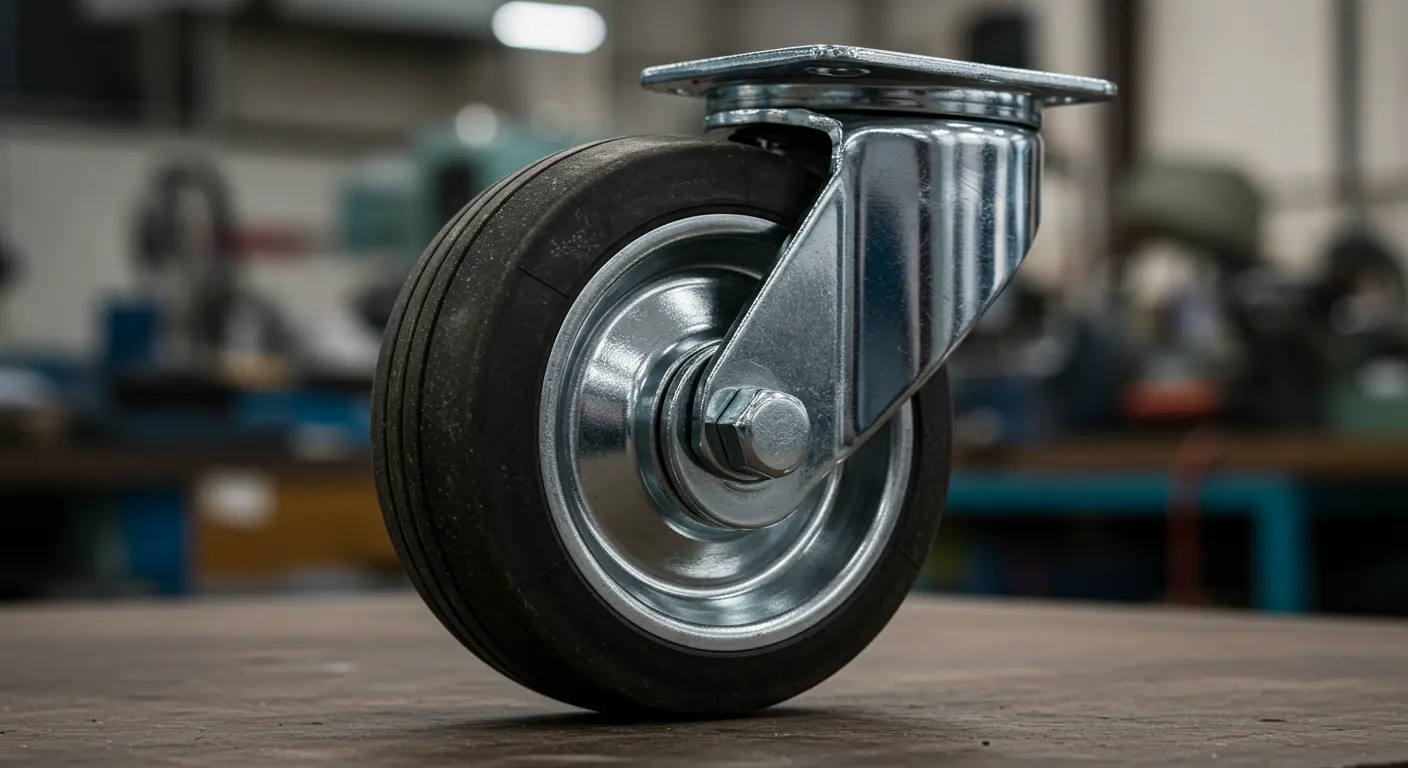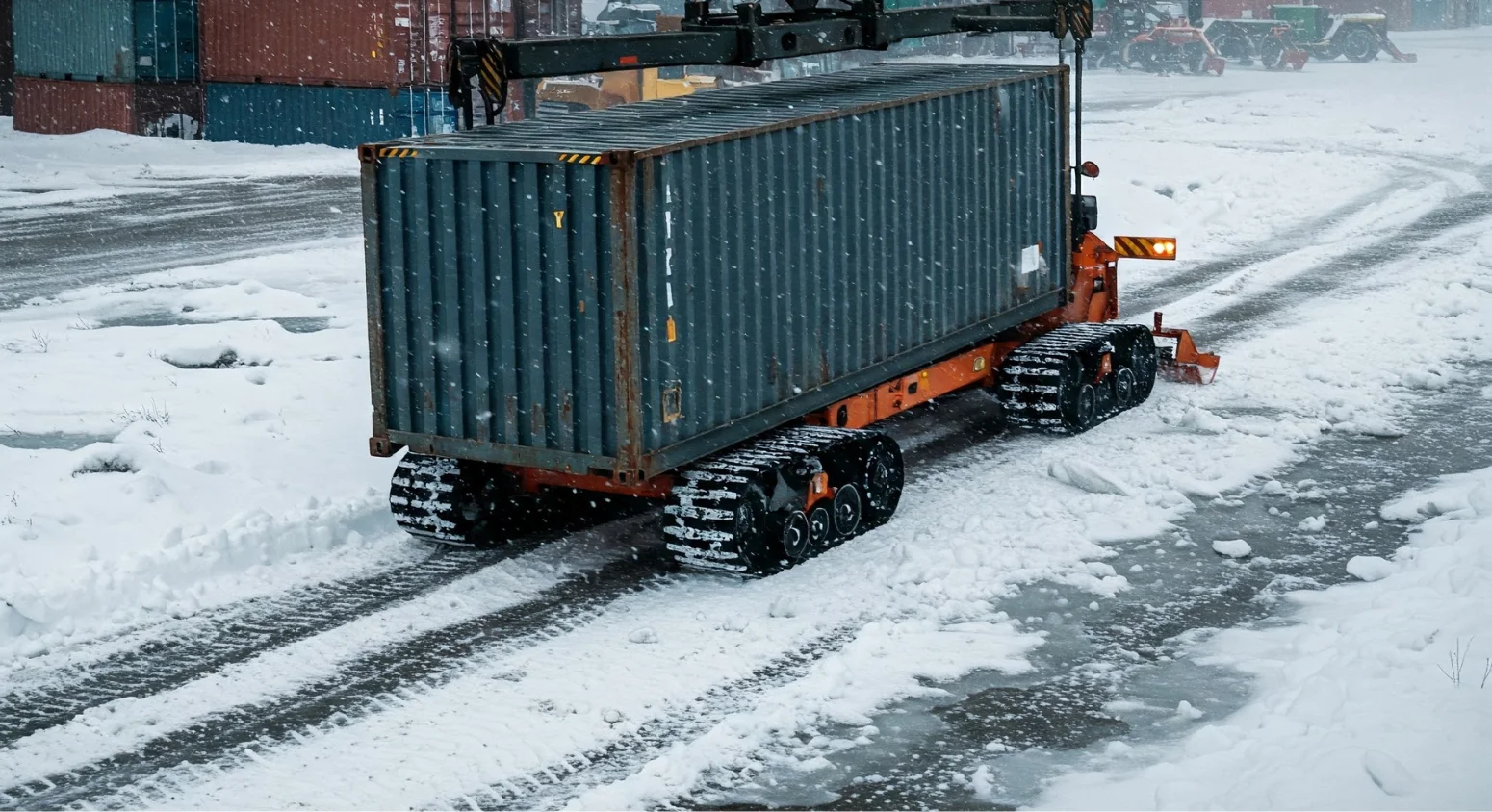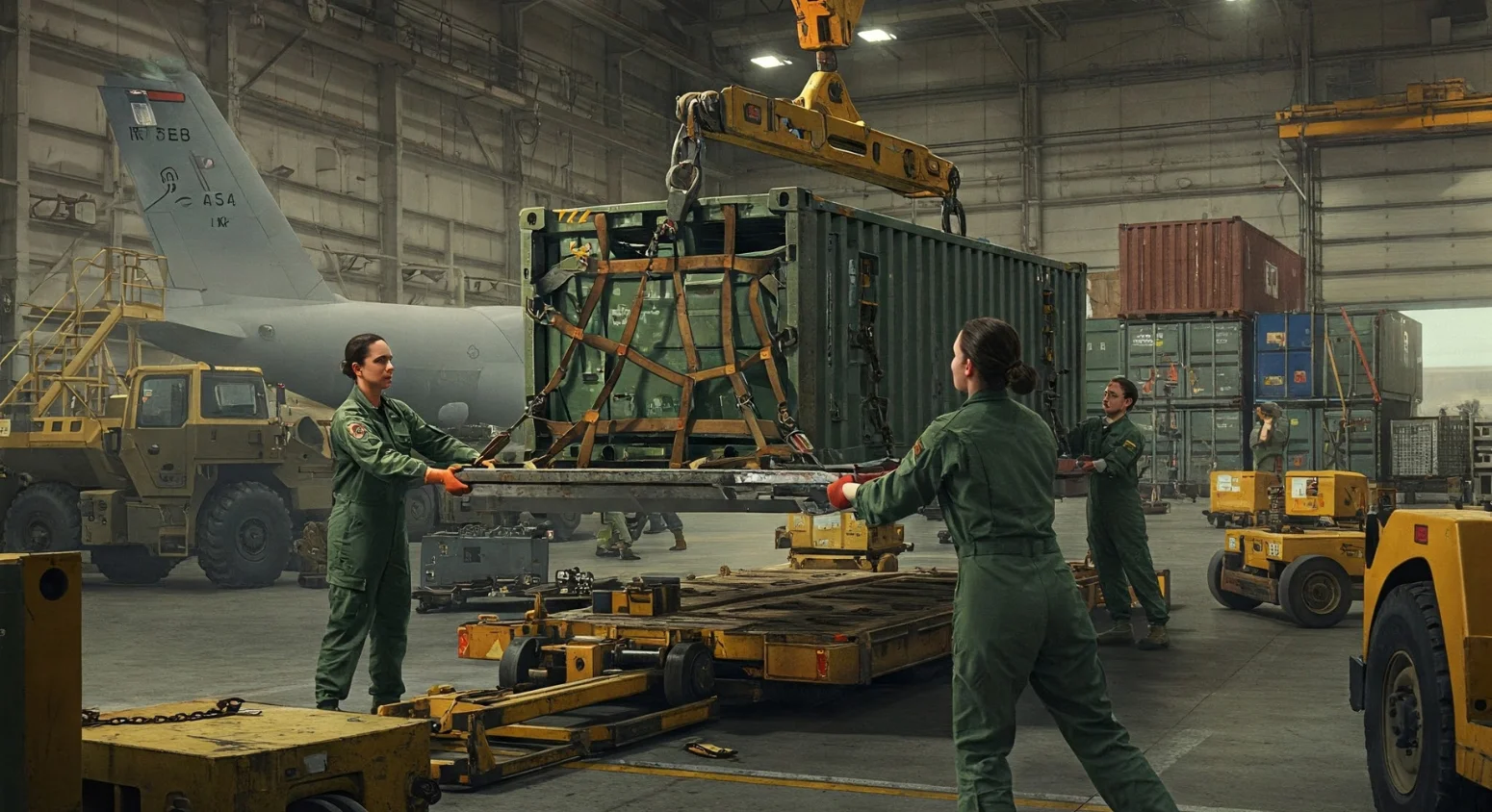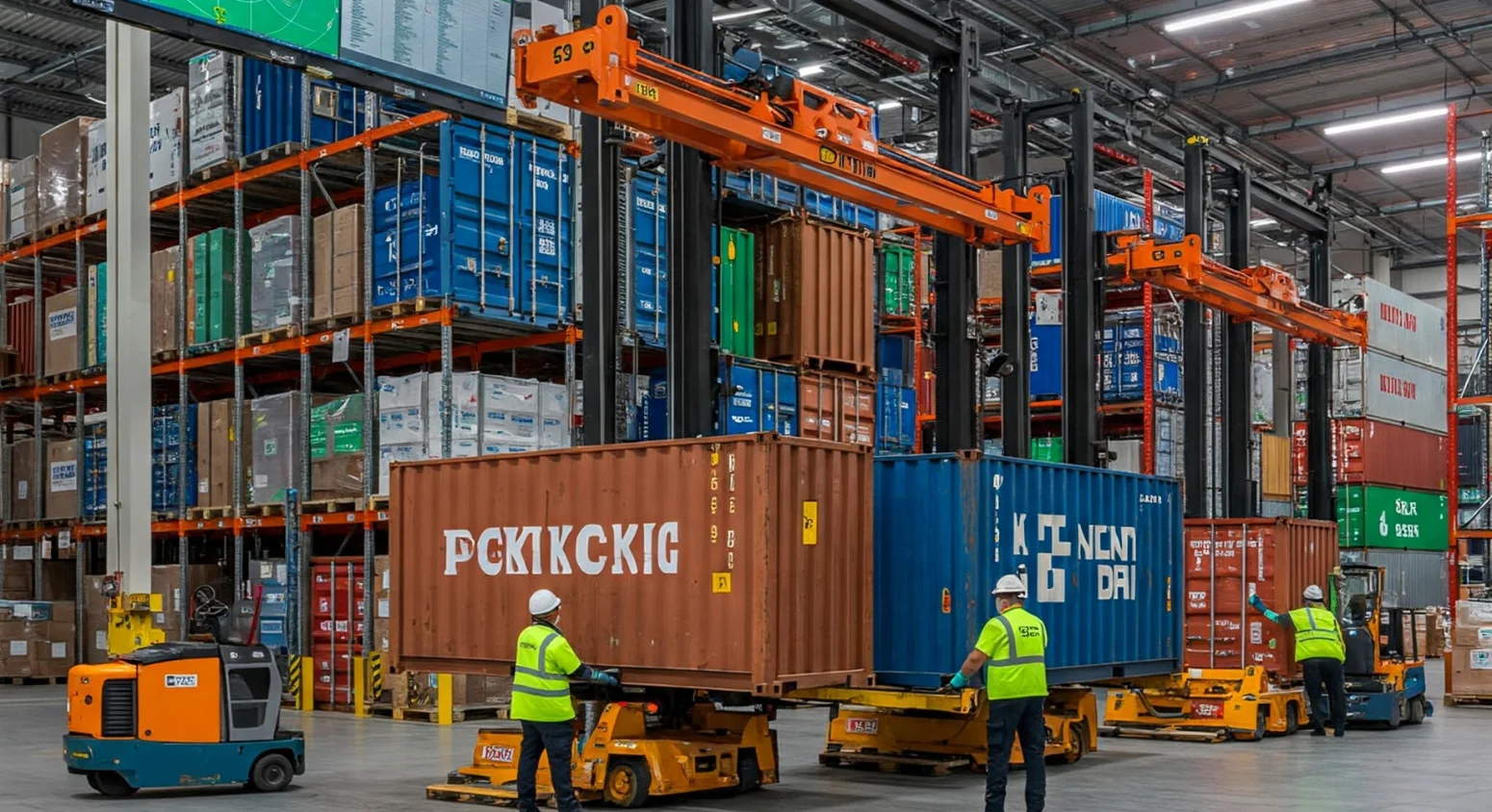Ever tried to move a shipping container only to find that the wheels can’t handle it? Shipping container wheel upgrade is not on most people’s wish lists, but it certainly does change the game in mobility, efficiency, and safety when the right wheels come along. It matters whether you are managing a very busy construction site or repurposing a container for some innovative project.
In this blog, we are going to take you through the nitty-gritty of choosing the right wheels for your shipping container. From why upgrading is necessary to different options and practical tips, you’ll see how a simple change can result in smoother operations and long-term cost savings. So are you ready to upgrade your shipping container wheels and unlock their full potential? Let’s dive into it!
Understanding the Need for Upgraded Shipping Container Wheels
How can life get any easier than this with shipping container wheels that are upgraded? It’s far too easy to overlook them until you upgrade them, and trust me, it’s the smartest move you can make if you want mobility and efficiency on your shipping containers. Let’s get down to why it’s so crucial that you do just that.
Role of the Wheels in Moving Containers
It has become less noticed that wheels are, in fact, the unsung heroines of your shipping container’s effective life. The wheels bear and sustain heavy weights, very rough landscapes, and fluid movement. Thus, without effective wheels, even the task of shifting an ordinary container from one place to another becomes impossible.
Common Problems Experienced with Standard Container Wheels
Standard wheels cannot meet heavy-duty demands. You may have to encounter:
- More wear and tear: The traditional wheels cannot bear heavy loads for a long time.
- Hard to ride on uneven terrain: Gravel, dirt, or grass makes the standard wheels nearly useless.
- Loss of efficiency: Stuck or immobile wheels waste your precious time and energy.
Why an upgrade of shipping container wheels is necessary
It goes far beyond such solutions; it opens much bigger advantages:
- More durability: Best-quality wheels will ensure durability thus cutting the cost of maintenance.
- Easier movement: When wheels are upgraded with respect to several kinds of terrain, it becomes easy to move your container.
- Transportation in safe hands: strong, dependable wheels mainly reduce the possibility of accidents in shipment.
Upgrading your wheels is not just about convenience; it’s optimizing performance and making sure that your investment pays off long-term. Imagine how much smoother things could be with wheels that work as hard as you do! Ready to explore your options? Let’s keep rolling.
Types of Appropriate Wheels for Shipping Containers
Not all wheels are the same, especially with shipping containers. The decision between them can seem like a headache, but sometimes it is a good idea. The right ones can change everything in how you use and transport your containers. Let’s talk about the most common types and help you pick the best option for your container.
a. Heavy-Duty Caster Wheels
Need wheels that can handle serious weight? Heavy-duty caster wheels are built for the job. These wheels are ideal for stationary or semi-mobile containers. Their robust construction ensures they can carry significant loads without buckling under pressure.
Why Choose Heavy-Duty Casters?
- Ideal for smooth, flat surfaces such as warehouses.
- High weight capacity for demanding tasks.
- Tough, resistant to abrasion.
b. Pneumatic Tires for Difficult Terrain
For a drum often put on rough ground or exterior surfaces, it is highly crucial to use pneumatic wheels since they have lots of shock absorption and gripping abilities that provide the best result concerning the type of terrain.
Benefits of pneumatic tires
- They allow easy movement on gravel, dirt, or grass.
- These wheels absorb much vibrations, thus providing protection for cargo.
- Higher traction on rough grounds.
c. Steel Wheels for Industrial Use
Steel wheels for heavy industrial use has no match. They are for applications where the job has too much movement in it. It is a matter of strength and durability.
Features of Steel Wheel:
- Has the highest load-carrying ability.
- Resists extreme conditions.
- Suitable for industries and factories.
d. Hybrid Wheels for Multi-Application Use
Not sure which to choose? Hybrid wheels take all the best qualities from a steel wheel, for example, durability and bring them to a pneumatic one with flexibility and ease, offering an excellent option for many users.
Why Hybrid?
- Useful for a number of terrains.
- Neutral Performance for all of your needs.
- Affordable use for multiple application.
How to Choose the Right Wheels
Ask yourself the following questions:
- What kind of terrain will the container travel on?
- How many times will you move the container?
- What weight will your new wheels support?
Thinking this way makes pretty clear which shipping container wheel upgrade fits best with what your operation demands.
How to Upgrade Your Container Wheels Step-by-Step
Upgrading shipping container wheels may seem to be a pretty tough process if you do not know how it is done in the right manner. A step-by-step guide will ensure your container rolls out with the minimum hassle and efforts. Let’s break it down step by step.
Step 1: Assess Your Current Wheels and Container Needs
Look at the current setup before you start the upgrade process.
- Are the wheels worn out or damaged?
- What kind of terrain will your container be moving across?
- How much weight does your container carry normally?
All those questions will lead you to the perfect type of wheels for you.
Step 2: Choose the Right Wheels and Size
Choose the appropriate wheels. A wheel should be able to offer a balance of durability, usability on different ground types, and payload. The choices are:
- Heavy-duty caster wheels for even grounds
- Pneumatic casters for ground use outdoors, on rough surfaces
- Steel, for industrial loads.
The diameter of your wheel should also be correct when paired with your container’s mounting set.
Step 3: Preparing Tools and Equipment
Yes, installation of wheels requires some tools. And the tools needed are as follows:
- A sturdy jack to lift the container safely.
- A wrench or power drill is required for loosening and tightening the bolts.
- If required, change wheel brackets.
Safety Precaution: Make sure the container is stable and secure before starting work on it.
Step 4: Replacement of New Wheels
All set. It’s time to change now.
- Jack one side of the container high enough so that this would remove it from the floor.
- Remove the worn out wheels. Inspect your mounting points with some rust.
- Place the new wheels. Tighten the bolts a bit so the new wheels now have a firmer grip.
- And repeat the procedures to all other wheels also.
Step 5: Testing and Adjustment
Mount the new wheels, then lower the container and test for movement.
- Roll smoothly?
- Wheels aligned?
- Do all the four of them take load evenly?
Any of the above? Then things need to be tightened a notch.
Bonus Tip: Maintenance for Long Life
Shipping container wheels do need some maintenance. You can check them at periodic intervals whether they are wearing off and clean them so debris does not hamper their working.
Following this guide will make upgrading shipping container wheels very manageable and rewarding. Just imagine the time, effort, and hassle you will save with a container that moves effortlessly where you want it to.
Cost-Effective Tips for Shipping Container Wheel Upgrades
You don’t have to spend a fortune on shipping container wheels upgrades. With some planning and strategic thinking, you can find ways to get long-term value for less. Here are some cost-effective tips for those on a budget but want high-quality results:.
a. Look for Wholesale or Bundle Deals
When you buy so many wheels, you can definitely save a lot. Many wholesalers also offer bundle deals should you order by the dozens because you get to pay a more reasonable price per wheel.
- Tip: Call those manufacturers or suppliers like TriWich and ask them if they do wholesale discounts.
- Bonus: Some package deals include installation tools, making it even easier and cheaper to upgrade.
b. Consider Retrofitting Instead of Full Replacements
If your current wheels are still in decent condition but need a performance boost, consider retrofitting them with new components. This option can be more affordable than replacing the entire wheel system.
What is Retrofitting?
It is an upgrading or replacing some parts such as bearings or axles while keeping the original wheel.
Why It Works: It offers improved performance at a fraction of the cost of full replacement.
c. DIY Installation to Cut Labor Costs
Sometimes you need to hire professionals, but DIY installation will save you so much money. Upgrading your wheels is quite a manageable thing if you have the right tools and a little patience. Here are the things you will need:
Tools You’ll Need: Wrenches, a jack, and a power drill—likely things you already have in your toolbox.
Why DIY Works: You’ll save money for hiring a pro and develop skill for the future with DIY.
d. Prioritizing Long Term Value Over Inital Savings
While you will be tempted by saving a couple of bucks off the cheapest set of wheels on the market, the long term savings in having quality wheels outweighs that little bit of saved money.
- Better wheels can cost a bit more up front but will be quicker in the long term by saving you a lot of money from less frequent replacements.
- Think longevity: spend that little extra on wheels that can take rugged loads so less wear is needed.
e. Compare Prices from Various Suppliers
The cost of shipping container wheels is highly variable and depends on the supplier. Therefore, it is wise to shop around and compare options before finally settling on a supplier.
- Explore Online Resources: Websites and forums can provide customer reviews, so you can have an idea which supplier gives you the best deal without losing quality.
- Local Options: Many times, local vendors will offer cheaper deals or have offers that a national company cannot match.
You see, using all these cost-cutting suggestions won’t cost much to make your shipping container wheels replaced. And in this manner, you would have all the advantages of high performance without wasting much money from your pocket. Do you have a new plan in mind? All you have to do is complete a few simple steps towards improving mobility and efficiency!
Your New Shipping Container Wheels Maintenance
Yay! You received your new shipping container wheels! Maintenance will ensure they run the best and last much longer. Now, let’s discuss a few more practical steps to maintain your wheels.
a. Routine Checks
Do you check your shipping container wheels? Check the wheels often before it becomes a hassle to check them. Now is the time to inspect the following areas:
- Wear and Tear: There is wear on the tread and sidewalls, probably in excess.
- Alignment: Are the wheels aligned for equal weight distribution?
- Lubrication Points: Identify parts that need lubrication so that they can freely move.
These checks will be able to find minor problems before they become major ones.
b. Clean the Wheels
Dirt and debris can hinder the rolling function of the wheels. This keeps them in their functions and prevents rust. Here’s how:
- Clean them thoroughly using a hose or pressure washer and dirt debris.
- Dry correctly after washing. In this way, moist buildups are prevented.
- Nothing inserted inside the wheel, Debris free
Clean wheel is a happy wheel!
c. Lube Lubrication reduces friction and wear.
Thereby, grease the following:
- Axles: It requires fine grease to run frictionless.
- Bearings: Must be greased to avoid corrosion and to run smoothe.
- Hinges and locks: Grease the hinges and locks and use them
Do not grease too much. The over-greasing attracts grime. Thus grease accordingly.
d. Periodically Check Distribution of Loads
Uneven weight distribution does not allow the wheels to wear out evenly. For proper balancing:
- Even Weight Distribution: The weight should be equally distributed in the container.
- Avoid Overloading: Too much weight is stressful on the wheels and other parts.
- Load Distribution Equipment: Using load distribution mats or equipment helps distribute the weight. Proper load management not only lengthens the wheel’s life but also increases safety.
e. Avoid Harsh Elements
Extreme weather conditions can damage the wheels. Keep them protected by:
- Covering them off-line: Cover your wheels with tarpaulins or covers to prevent the sun, rain and snow from getting at them.
- Keeping them indoors: Keep them in a sheltered place to put them away from the sun’s direct rays and most of the natural elements.
- Apply protective coats: a rust-resistant spray or coat can be applied on any exposed metallic part for further protection.
These will prevent corrosion and material breakdown.
f. Tackle Problems Early
Replace a bad wheel, for instance.
- Don’t wait till it will get you into trouble.
- Check loosening of bolts and nuts for instance. Tighten always and prevent loosening overtime.
- If you do not know how to correct the problems, just go ahead and seek professional assistance so that the wheels are not destroyed further.
Maintenance makes the wheels continue to work well.
These practices of maintenance will ensure your upgraded shipping container wheels get proper care and remain in excellent condition to give you years of faithful service.
Conclusion
Upgrade shipping container wheels for an investment in being not just practical but more so in efficiency, safety, and savings in the long run. That is especially true where uneven ground, heavy weights, or really old wheels plague your containers’ movement and working.
So, are you ready to take advantage of improved mobility? Considering your container’s needs, selecting the right kind of wheel, and committing to regular maintenance can unlock the full potential of your container’s wheels and ensure that they perform well for years to come.
Remember, upgrading shipping container wheels isn’t just about making a quick fix; it’s about optimizing your entire operation. The time and effort you invest now will pay off in smoother processes, improved safety, and reduced downtime. So, why wait? Take the next step today—your container and your business will thank you for it!
Frequently Asked Questions (FAQs)
1. Why should I upgrade my shipping container wheels?
Upgrading shipping container wheels enhances mobility, reduces wear and tear, and improves overall efficiency. It ensures that your container can move smoothly on various terrains and minimizes downtime due to wheel failure.
2. Can I install new wheels myself?
Yes, replacing shipping container wheels is a do-it-yourself project that you can handle. With basic tools such as a jack, wrenches, and replacement wheels, you can put them in place yourself, thereby saving on labor costs while making your container more mobile.
3. How often should I check and maintain my wheels?
This should be done after every few months or after crossing the container across rough surfaces. Regular cleaning, lubrication, and checking for damage or wear will keep your wheels in an excellent condition and extend their lifespan.
4. How much does upgrading shipping container wheels cost?
Depending on the kind of wheels and if one installs them personally or hires people to do so, it may vary. However, durable, high-quality wheels can help save money on maintenance in the long run and operate more efficiently.



